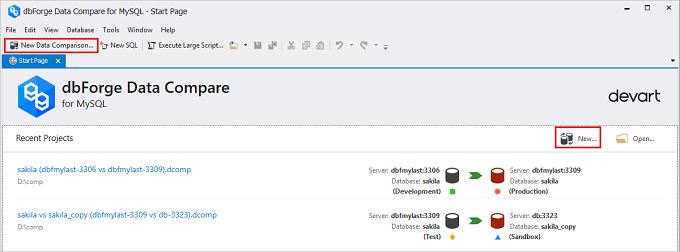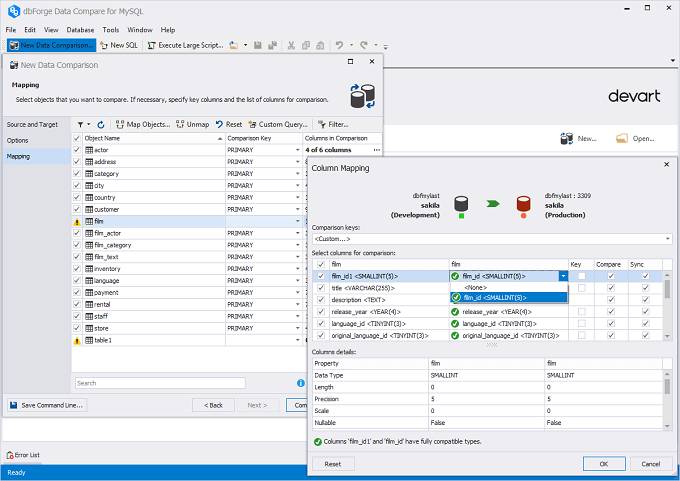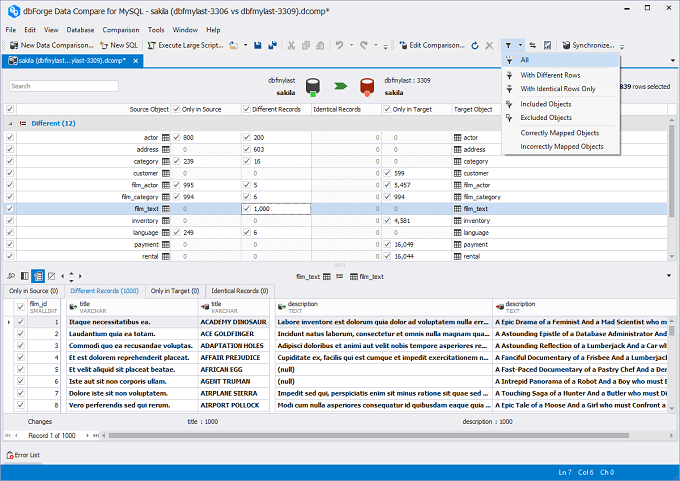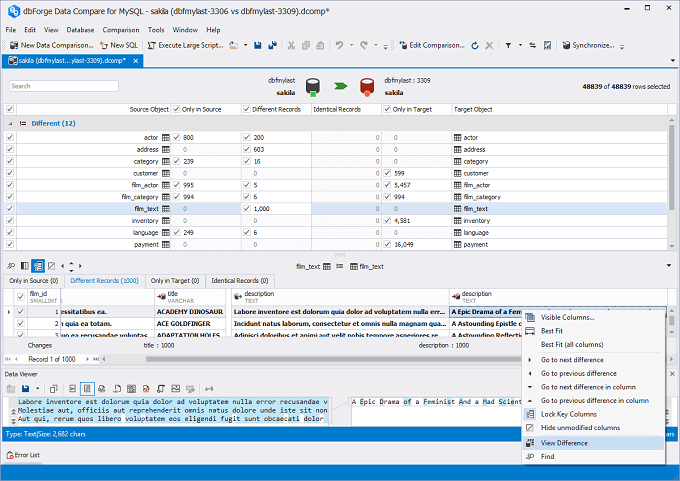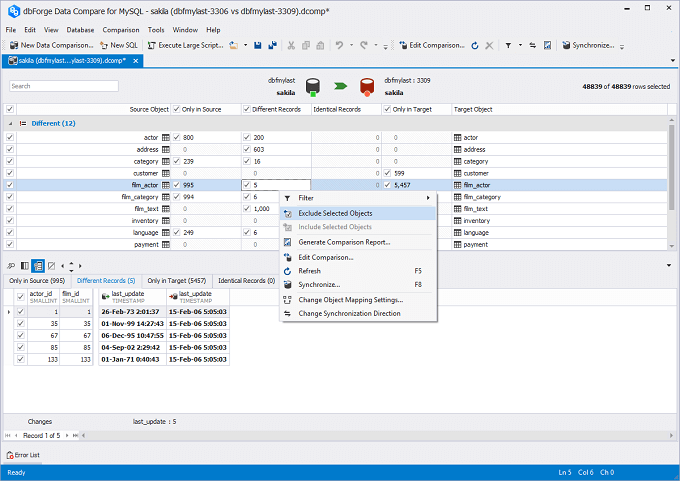How To Compare Two MySQL Databases
Contents
- Introduction
- What is data comparison?
- Getting data differences of two MySQL databases
- Analyzing data differences of two MySQL databases
- Conclusion
Introduction
The article is dedicated to Devart dbForge Data Compare for MySQL. With convenient UI, comprehensive comparison and synchronization wizards, rich settings, high performance, and stable work of dbForge Data Compare for MySQL you will achieve your goals in data comparison with the maximum quality and speed.
What is data comparison?
Data comparison is a process aimed at comparing data of two databases (Source and Target) to find any differences and make data of these databases identical.
Source is a database content of which is inserted to Target after synchronization. Target is a database content of which you compare and synchronize with Source.
After comparison process is completed, you will be able to view data differences in databases and analyze them in a special document.
Five stages of data comparison:
1. Creating connections to MySQL servers, where the databases to be compared are located.
2. Selecting Source and Target and setting up additional parameters for comparison.
3. Mapping required databases in Source and Target manually if automatic mapping cannot satisfy your specific needs.
4. Analyzing comparison results and selecting actions to apply during synchronization (e.g., Insert, Delete, Update objects).
5. Synchronizing data in databases.
Getting data differences of two MySQL databases
Now let's compare two databases using new Data Comparison Wizard available in dbForge Data Compare for MySQL.
Click New.. on the product Start Page or New Data Comparison on the Standard toolbar to open New Data Comparison Wizard.
Specify the needed connections to MySQL servers in the Connection fields.
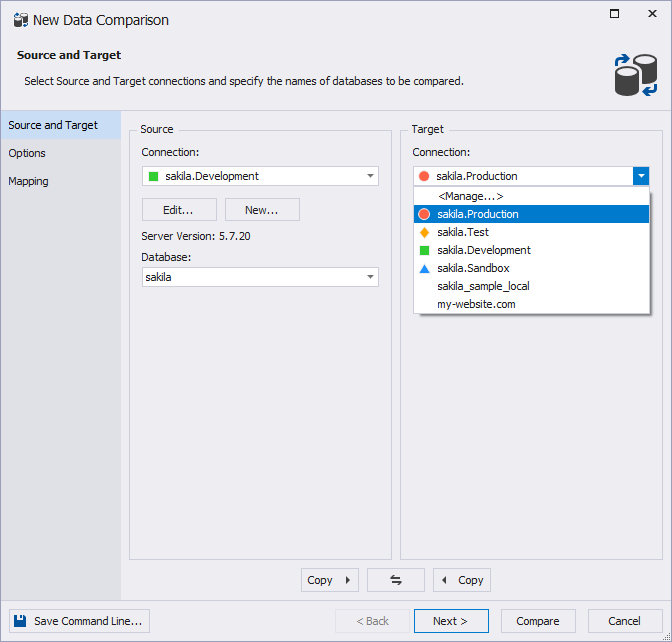
Select the databases you want to compare in the Database fields.
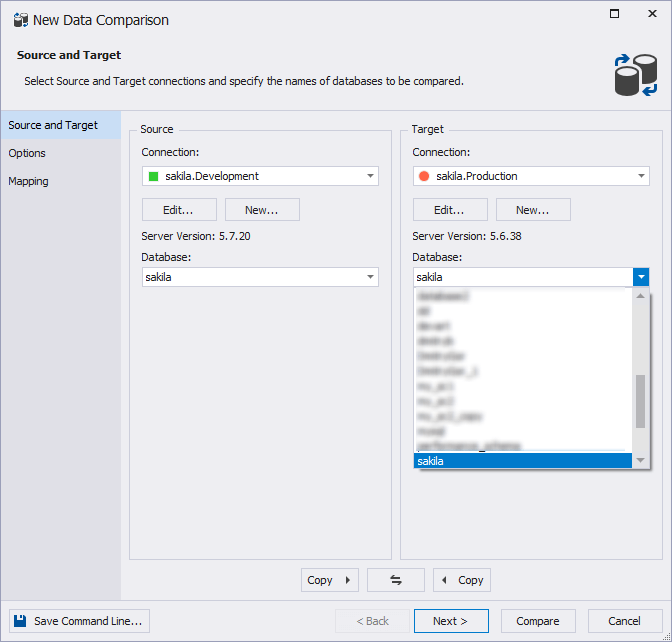
Note, if you want to compare tables in the same database, you may just select Source connection and database and then just click the Copy source settings to target button.
When connections are selected, databases are automatically mapped and displayed in the Database fields. In this fields, you can select the needed target database to map to the source one from the dropdown list.
Specify additional options of comparison process. Click Next.
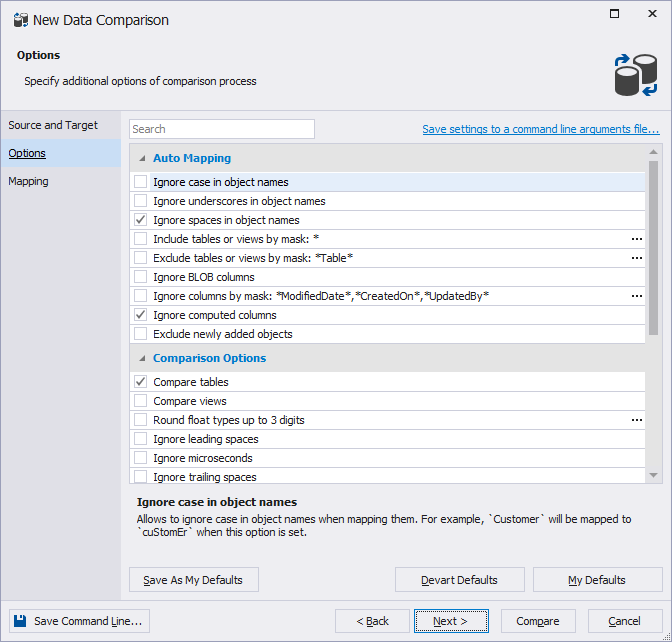
Select objects that you want to compare. If necessary, specify key columns and the list of columns for comparison.
Click Compare to start comparison. The wizard closes, and the data comparison document, where you can view data differences, opens.
Analyzing data differences of two MySQL databases
Data comparison document provides you a clear view of differences found in the databases and offers rich settings to analyze these diffs. When analyzing MySQL databases diffs, you can:
Filter comparison results in the grid using the Filter list to better understand them.
See SQL differences of compared objects in the text comparer under the grid.
If required, include only necessary objects into synchronization by selecting checkboxes near the needed objects. To exclude objects from synchronization, clear the checkboxes next to them.
Conclusion
From this article you have learned how to perform simple actions related to comparing data in MySQL databases, viewing and analyzing diffs between them.
dbForge Data Compare for MySQL will help you to compare data in MySQL databases and quickly obtain the comparison results by completing just a few simple steps.
